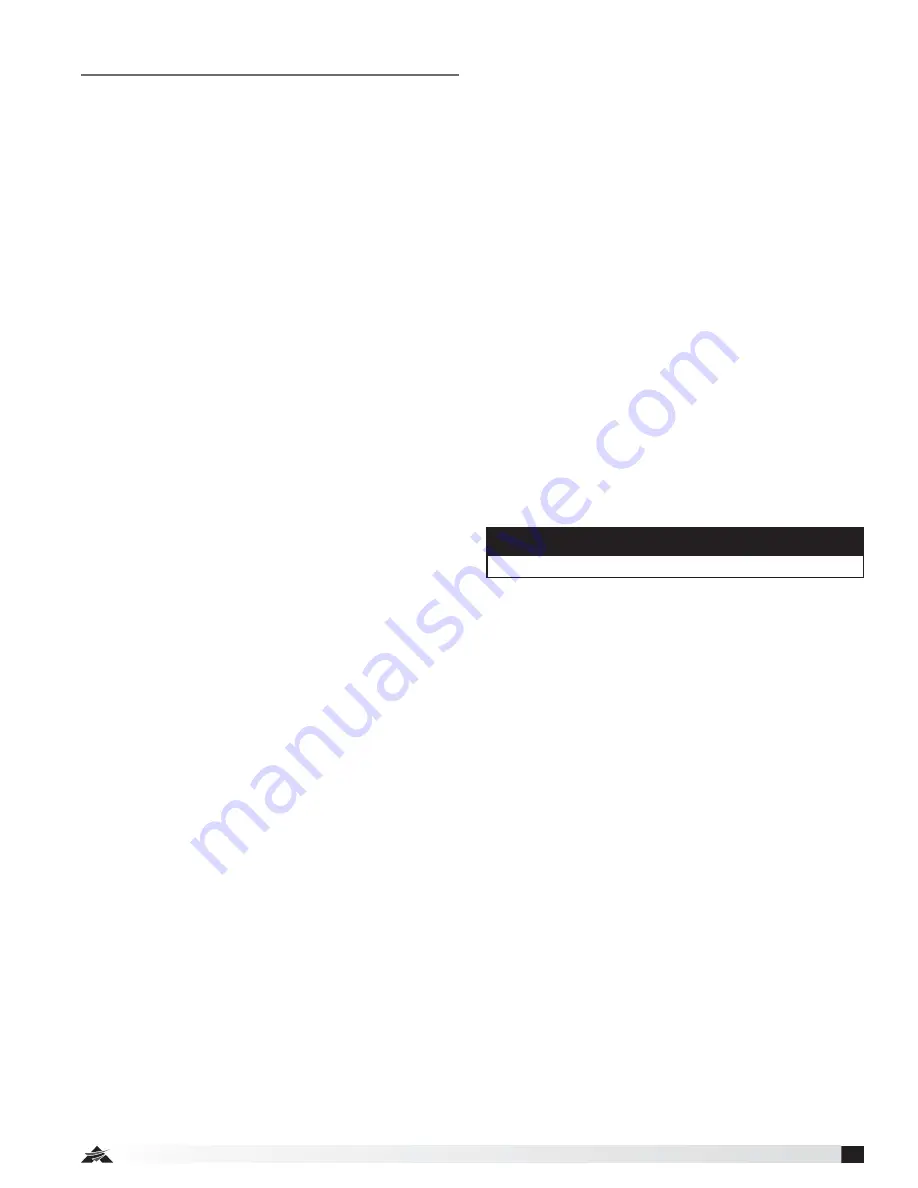
17
Fire Ready Hood
Operation - How it Works
The XRRS functions as a standard ventilation range
hood with the added capability to suppress stove top
fires.
Designed for use over a standard 30 and 36 inch
residential range, it uses a mechanical, commercial style
automatic fire suppression system.
Refer to the illustration below to familiarize yourself with
the following functions.
• A controller provides an internal alarm plus
connections for up to two external alarms that may go
to a local alarm panel and/or remote location, i.e. the
local fire department.
• The unit is powered from standard 115 VAC / 60 Hz /
single phase. A main Power Switch is located at the
upper left of the front surface. (Remote ADA switches
provided).
• For normal daily use, the unit provides a fan speed
control knob and a light switch for the light.
• A Reset Button (white) is provided to energize the
controller and the main power disconnect contactor
(electric range) or valve (gas stove). Upon initial power
up, the control system is not enabled and this reset
button needs to be pressed. In doing so the Status
LED below the reset switch will turn from red to green.
Environmental Monitoring / Pre-Suppression
Functions
The controller operating system is designed to enhance
the functionality of the unit and the safety of the cooking
environment.
The system relies on input from a set of thermostats to
control the fan and shutoff power to the stove when the
temperature reaches preset points.
As the temperature rises, the controller monitors the
environment with the three (3) thermostats. The board is
programmed to respond to two temperature thresholds.
The first at 150°F and the second at 190°F.
At the first temperature threshold of 150°F, the
ventilation fan will turn on,
regardless of the front
panel switch setting.
At the second temperature threshold of 190°F:
1. The power disconnect to the stove (valve or
contactor) is de-energized, shutting off power to the
stove.
2. The “local” alarm output is tripped, indicating a
trouble condition with the unit. This output is from
contacts C0 and Y0 on the controller.
3. The on-board audible alarm sounds (high pitched
tone).
NOTE
See page 21 for controller schematic.








































